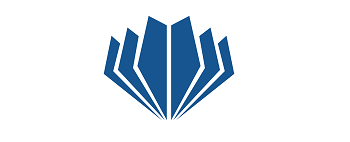Straightening Up After Bowing:
Low self-esteem has often been called one of our generation’s main inner difficulties. Rabbi Abraham Twerski, MD has devoted a number of books and countless lectures to the importance of proper self-esteem. He makes a crucial point, very relevant to our discussion of humility – that cultivating self-esteem does not in any way contradict or diminish from the traditional Jewish emphasis on humility. Being humble means having the accurate sense of self so crucial for healthy self-esteem. We here contribute a number of sources that underscore the spiritual source of positive self-esteem.
In a previous shiur we discussed the importance of bowing during Shemoneh Esrei as an act of humility. Bowing is a physical expression of negating our ego before G-d. Ironically, complementing the discussion of bowing and its importance is a Talmudic passage about getting up after bowing. The gemara quotes the verse, “Hashem straightens out those who are bent (Hashem zokeif kefufim),” as the source for straightening up when saying the name of G-d. We bend the knees at the word “Baruch” (Blessed), bow down for the word “Ata” (You), and straighten up at the word “Hashem”. Getting up after bowing is, according to the Talmud, equally as important as bowing itself. Rav Dessler zt”l and Rav Kook zt”l each, in their own way, bring out different aspects of the interplay between humility and sense of self.
Rav Dessler zt”l (Mikhtav Mei’Eliahu vol. 3, p. 296) sees the three stages of bowing as an inner process. We at first recognize G-d as the source of all blessing and realize our own smallness — we bend the knees at “Baruch”. Then, when encountering G-d’s essence we totally negate ourselves —we bow down at “Ata”. From this comes revelation out of hiddenness, recognizing Hashem — we straighten up at “Hashem”. Israel has cultivated the ability to recognize G-dliness even when it is hidden and therefore merits the Divine revelation.
It is this ability to negate one’s ego while bowing before G-d that enables the Jew to stand up straight and experience the Divine revelation.
Rav Kook, zt”l (Siddur Olat R’aya, vol. 1, p. 267) sees bowing and straightening up as a metaphor for two stages of personal development. People begin with all sorts of negative forces they need to weed out, suppress, and destroy. This is difficult work that demands a lot of subjugation — of ego, and of negative inner forces in general. This is the bowing stage of development, where we bend ourselves in an attempt to destroy the problematic elements within us.
However, teaches Rav Kook, subjugation and self negation are a preparatory stage of development. “The goal is to shine with the light of G-d with an abundance of strength and joy. There all of the powers of the soul straighten up and endure with much courage and an elevated and lofty life force.” First we bow, but then we straighten up.
Our real self is naturally good and, when cultivated, improves and strengthens. Our negative side is not essential to us, but only an incidental covering, a darkness of the body. Once we are freed of the negative forces within us, a person feels a constant strengthening of his inner self with every advance and additional good. Real self good does not weaken the soul, but lifts it up and strengthens it through the redemption of the living G-d.
The Talmudic source for straightening up after bowing is “G-d straightens up the crooked. (Tehillim 151)” Rav Kook offers us the following reading:Hashem straightens up – constantly strengthening and improving – those who have bent themselves down – who have enabled this by first subjugating the negative powers within them.
The daily experience of bowing in Shemoneh Esrei might go beyond being just a ritual-procedural part of the daily prayers and become an integral part of our inner personal growth. One possible way is to see bowing and straightening up as expression of an inner experience. When bowing we physically express humility, and then, according Rav Dessler’s and Rav Kook’s teachings, revelation, growth, personal strength, and joy is enabled – we straighten and stand up.





